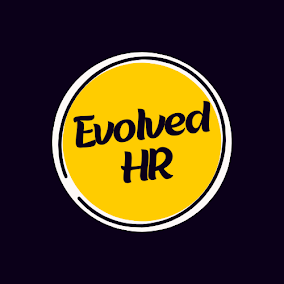Articles can be an effective way of adding content and building deeper relationships with readers on your site, while simultaneously giving experts an outlet to share their expertise and gain new customers.
Biases often creep into the recruiting process, distorting recruiters' and hiring managers' impressions of candidates. Unknowingly, they may seek out or interpret information which supports their initial impression, while disregarding or dismissing evidence that contradicts it.
1. Be Human-Based
Recruitment and hiring process bias occurs when individuals make decisions that are irrational; favoring one candidate over another because of irrelevant personal traits or qualities that don't relate directly to the job in question. Recruiters may also succumb to unconscious bias when selecting candidates; perhaps liking someone simply because they attended their college or share similar interests.
Recruiters and hiring managers must be mindful of their own biases during interviews and work hard to reduce or avoid them. One effective method of eliminating bias is blind resume screening - which removes all identifying information like photo and name from job applications - in addition to using software which detects potentially discriminatory language such as gendered job descriptions or any software which flags biased phrases in job applications.
An additional way to combat bias is to standardize the interview process and use structured interviews that focus on specific skills candidates need for your position. This helps minimize likeability bias while providing all assessors with a standard framework to follow. It may be useful to include multiple interviewers from diverse backgrounds with differing worldviews who conduct the interviews.
2. Incorporate Pre-Employment Tests
Along with educating your team about bias, it's also essential to implement tests which assess job-related skills. Such assessments offer an objective measure for screening candidates before conducting interviews - they help eliminate bias while shortening hiring time while decreasing cost per hire.
Tests can also help you eliminate biased language in job descriptions. For instance, using buzzwords such as "rockstar" or "ninja" could evoke masculine associations that discourage women from applying to roles they qualify for. Textio can analyze job descriptions for gendered language and suggest alternative wording solutions.
Affinity bias is another type of discrimination in which hiring managers prefer employees that share similar traits to them or who share similar interests, leading to an imbalanced workforce and preventing your company from reaping the benefits that diversity brings.
Affinity bias may not always be conscious, yet its consequences for your business can still be significant. By providing education on this issue and working to eliminate it from decisions being made about candidates based on data-driven decisions that are fair for everyone involved, you will ensure data-driven decision making that puts all candidates into equal consideration.
3. Create a Panel of Interviewers
Addition of multiple interviewers can reduce the possibility of bias. Furthermore, it provides candidates an opportunity to meet people with differing interests and worldviews; this helps prevent similarity bias issues from developing further. Adding panelists who score skills tests or work samples as scoring panels also allows for unbiased assessment based solely on performance rather than similarity bias issues.
Avoiding bias in hiring helps companies build more diverse teams and reduces the risk of costly discrimination lawsuits.
Unconscious bias occurs when recruiters, reviewers or decision-makers make choices based on expectations or stereotypes that don't exist - such as when an outstanding employee recently left and you expect their replacement to resemble them in every way; this phenomenon is known as expectation anchor bias - it can become an issue in the workplace if it stops you from selecting the most qualified candidate for each role; eliminating bias can foster better workplace culture while simultaneously increasing productivity.
4. Ask Questions That Are Relevant to the Job
Bias can arise when interviewers and decision-makers focus on non-related personal qualities of candidates during an interview or decision process, such as physical attractiveness or attending the same school. This kind of bias, known as affinity bias, can result in an incorrect assessment of an applicant's abilities.
To eliminate bias, the initial screening process should be "blind," meaning resumes should be stripped of their identifying information so hiring teams can assess candidates based on their qualifications alone. Doing this also helps avoid recency bias which occurs when those interviewed most recently tend to be given preference.
Asking applicants to submit work samples can be an effective way of combatting unconscious bias during interviews. For example, asking an engineer to write some code, copywriter to create a blog post, and social media manager to develop strategy are all examples of work samples that may help mitigate unconscious bias during an interview process. Skills tests also play a vital role in combatting unconscious bias as they allow applicants to demonstrate their abilities unpremeditatedly.
5. Avoid Anchoring to One Trait or Skill Set
Anchoring is one of the most prevalent hiring biases. This refers to interviewers' tendency to focus on specific qualities about a candidate at the beginning of an interaction, which then influences subsequent evaluations and can result in biased judgment, unfair decisions or overlooking negative information later in the process. Anchoring can especially impact salary negotiation, since initial impressions can influence one's final decisions regarding compensation requests from candidates.
Another form of bias is affinity bias, in which an interviewer favors candidates who share similarities in background or experience with themselves and with those being interviewed. This may occur during application review or phone screen when recruiters form opinions based on an applicant's music taste, school attended or appearance; such instances of affinity bias can create homogenous workforces that hinder diversity initiatives and negatively affect performance. Hiring managers must be cognizant of their heuristics as well as legal guidelines regarding prohibited attributes when selecting candidates for evaluation purposes.






.jpg)

.png)
No comments:
Post a Comment